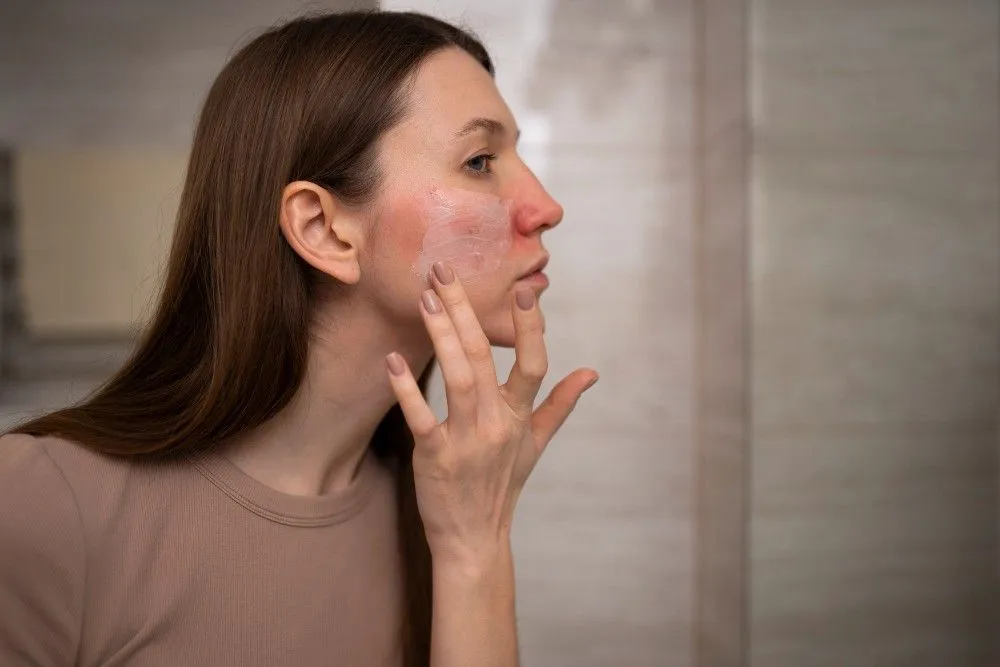Ever felt like a pebble got stuck in the shoe, but nothing’s there? That stabbing pain right beneath the toes could mean something more than just poor footwear. It could be Morton's neuroma, a nerve condition that slowly turns walking into a nightmare.
Left untreated, it only worsens. The nerve in the foot becomes inflamed, thickened, and painfully sensitive. And here’s the thing: many ignore it until surgery becomes the only choice.
But that’s not the only way out. This piece takes a deep dive into Morton's neuroma cure, what works, what doesn’t, and how simple changes can bring lasting relief, without stepping into an operation theatre.
What Is Morton’s Neuroma?
Morton’s neuroma is a thickening in the interdigital nerve between the third and fourth toes, which are located between the metatarsal bones. The condition develops when the tissue around a nerve in the ball of the foot becomes irritated or compressed. It often feels like stepping on a stone, sharp and sudden.
Though benign, the pain can be severe. Most patients report burning, tingling, and even numbness in the toes. Many people ignore the first few episodes of discomfort. That’s often a mistake.
The problem affects middle-aged adults more, especially women who wear high heels or tight shoes. In fact, around 80% of reported cases come from women aged 40 to 60.
Unlike other foot conditions, Morton's neuroma doesn’t come with visible swelling. That’s why diagnosis often gets delayed. It hides in plain sight until walking becomes unbearable. If detected early, natural cures for Morton’s neuroma can help ease the symptoms without drugs or surgery.
What Are The Symptoms Of Morton’s Neuroma?
Recognizing early signs makes a huge difference in treatment outcomes. These symptoms worsen over time:
Burning or stabbing pain near the third and fourth toes
Sharp pain that spreads with walking or standing
Tingling or numbness in the forefoot
Sensation of a fold or object in the shoe
Relief after removing shoes or massaging the feet
This pain grows when pressure increases, tight shoes, prolonged walking, or running. Left unchecked, it becomes chronic. Immediate attention and ball of foot pain treatment are crucial.
What Are The Causes Of Morton’s Neuroma?
The primary trigger? Improper footwear. High heels and pointed shoes compress the toes, putting constant pressure on nerves. The nerve swells, leading to pain and thickening.
Secondary causes include:
Foot deformities like bunions and hammertoes
Flat feet or high arches
Repeated stress from high-impact sports
Poor walking posture or gait issues
Sports like tennis, skiing, and jogging aggravate the nerve due to repetitive stress. Add poor shoes to the mix, and the nerve breaks down fast.
Even prolonged barefoot walking on hard surfaces can create microtrauma to the nerve. Understanding these triggers is the first step toward a Morton’s neuroma cure.
How I Cured My Morton’s Neuroma?
Getting rid of Morton’s neuroma doesn’t always require surgery. In fact, for many, non-surgical Morton’s neuroma cures have worked well. Here’s what brings the most relief:
1. Changes In Footwear
Shoes should never squeeze or pinch the toes. Look for:
Wide toe boxes
Low heels or flats
Soft soles and arch support
Avoid high heels and narrow dress shoes. Stretching current shoes with expanders helps in some cases. Choosing the right footwear acts as the first step in any neuroma pain solution.
2. Use Of Shoe Pads
Metatarsal pads offload the pressure from the ball of the foot. These pads support the arch and spread the toes slightly to reduce compression on the nerve.
OTC pads are cheap and easy to use, offering early-stage relief for many cases. This is an excellent Morton’s neuroma home remedy.
3. Orthotic Inserts
Orthotics, both custom and over-the-counter, help align the foot and reduce nerve strain. They:
Support the arch
Fix gait problems
Distribute pressure evenly
Some patients find full recovery with orthotics alone. They're a great alternative treatment for Morton’s neuroma without drugs.
4. NSAIDs And Ice Therapy
Painkillers like ibuprofen cut down swelling and pain. But prolonged use causes side effects. Ice therapy is safer; 20 minutes with a wrapped ice pack gives fast foot nerve pain relief.
5. Steroid And Alcohol Injections
Doctors may recommend injections if home care fails. Two types:
Corticosteroids: Cut inflammation
Alcohol sclerosing agents: Shrink the nerve
While effective, injections should be spaced out. Too many can weaken nearby tissues. Always discuss risks before starting.
6. Surgery For Severe Cases
When all else fails, surgery remains the last choice. It involves cutting the ligament or removing the nerve.
Surgical Option | Details | Recovery Time |
Dorsal Approach | Top of foot incision | Walk post-surgery, faster recovery |
Plantar Approach | Sole of foot incision | Crutches needed, longer healing |
Side effects include numbness and scarring. Doctors avoid surgery unless symptoms are disabling.
Exercises For Morton’s Neuroma
Therapy exercises rebuild strength and mobility. Regular movement increases blood flow and eases nerve inflammation. Try these:
1. Golf Ball Roll
Place a small ball under the foot. Roll it slowly under the arch and toes for one minute. Do 3–4 sets per day.
2. Towel Grab
Lay a towel on the floor. Use your toes to pull the towel toward you. Add small weights on the towel to build muscle control.
3. Resistance Band Pull
Wrap a band around the big toe. Gently pull back while pushing the toe forward. This stretches the nerve and strengthens the foot muscles.
These routines support Morton’s neuroma recovery without any medication.
How Can You Prevent Morton’s Neuroma?
Prevention starts with conscious footwear and body movement. Use these rules:
Wear wide-toed, cushioned shoes
Skip high heels above 2 inches
Use orthotics if you walk or stand all day
Take regular breaks during standing work
Massage feet daily with cooling gels
Use anti-fatigue mats in workspaces
Runners and athletes should avoid overtraining without proper footwear. Regular foot checks can catch the earliest signs of nerve irritation.
Final Thoughts
Morton’s neuroma starts silently, but the pain speaks loudly later. The longer it hides, the harder it becomes to fix. The good news? It doesn’t always need surgery. With the right footwear, simple exercises, and conservative care, it’s possible to get rid of Morton’s neuroma at home.
Understand what triggers it, make necessary changes, and stick to a plan. Relief is not just possible, it’s common for those who act early. Don't ignore that pebble-like feeling. It might be more than just an uncomfortable shoe.
أسئلة متكررة
How do you shrink Morton's neuroma naturally?
Apply ice packs, wear supportive shoes with metatarsal pads, and do foot exercises to reduce pressure and inflammation on the neuroma.
What is the latest cure for Morton's neuroma?
The latest treatments include cryotherapy to freeze the nerve and injectable alcohol sclerosing to shrink the neuroma.
How do I treat myself with Morton's neuroma?
Self-treatment includes resting the foot, using metatarsal pads, icing, taking anti-inflammatory medication, and doing stretches and exercises.
Can Morton's neuroma heal on its own?
In some mild cases, Morton's neuroma can heal on its own with proper rest, icing, padding, and avoidance of aggravating activities.
What are 10 signs you may have Morton's neuroma?
1. Burning pain, 2. Tingling or numbness, 3. Swelling, 4. Pain that worsens with activity, 5. Difficulty walking, 6. Cramping in the forefoot, 7. Feeling like a pebble, 8. toe pain, 9. Thickening of nerve tissue, 10. Relief from removing shoes.
What Are The Best Shoes For Morton’s Neuroma?
Look for shoes with a wide toe box, good arch support, and soft cushioning. Brands that focus on orthopedic designs work best.
How Long Does It Take To Heal Without Surgery?
Mild cases improve in 2–3 months with rest, padding, and therapy. More advanced cases take up to 6 months for full recovery.
Can Cryotherapy Help Morton’s Neuroma?
Yes. Cryotherapy involves freezing the swollen nerve. It's a newer Morton’s neuroma treatment that reduces the size and pain with minimal downtime.
What Is Morton’s Neuroma Pad Placement Technique?
The metatarsal pad should sit behind the ball of the foot, not under it. This lifts and spreads the bones, easing pressure on the nerve.
Can Morton’s Neuroma Come Back After Recovery?
Yes. Improper shoes, untreated gait problems, or high-impact activity can cause a relapse. Prevention through footwear and daily exercise is key.
كُتب بواسطة







